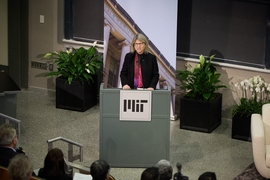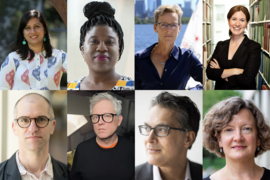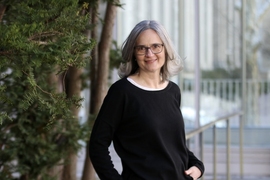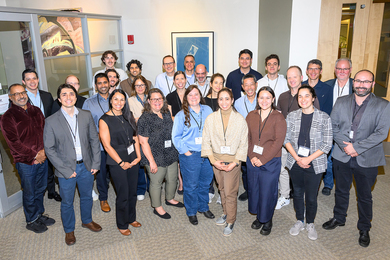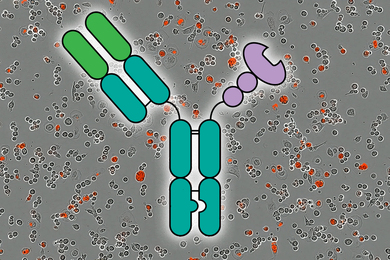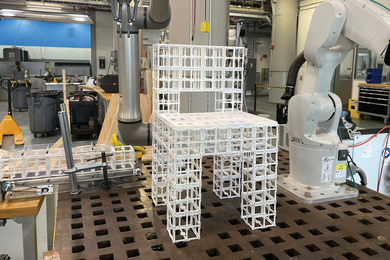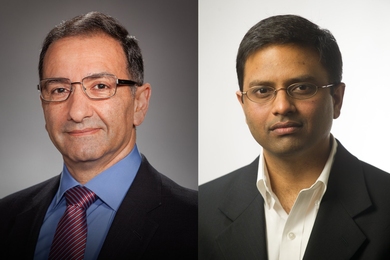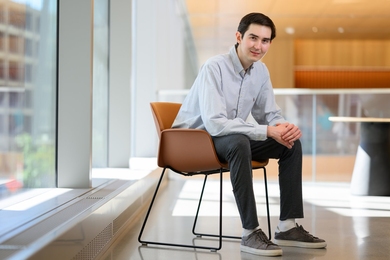A new initiative will offer faculty in the MIT School of Humanities, Arts, and Social Sciences (SHASS) the opportunity to participate in a semester-long internal fellows program.
The SHASS Faculty Fellows program, administered by the MIT Human Insight Collaborative (MITHIC), will provide faculty with time to focus on their research, writing, or artistic production, and to receive collegial support for the same; to foster social and intellectual community within SHASS, including between faculty and students beyond the classroom; and provide informal opportunities to develop intergenerational professional mentorships.
“SHASS faculty have been eager for a supportive, vibrant internal community for the nearly 35 years I’ve been at MIT,” says Anne McCants, the Ann F. Friedlaender Professor of History, and Faculty Fellows Program committee chair. “By providing participants with UROPs [Undergraduate Research Opportunities Program projects] and other opportunities to interact with students, we’re demonstrating our commitment to fostering an environment in which faculty can recharge and sustain the high-quality teaching and service our community has come to expect and appreciate.”
The creation of the program was one of the recommendations included in a May 2024 SHASS Programming Initiative Report, an effort led by Keeril Makan, SHASS associate dean for strategic initiatives, and the Michael (1949) and Sonja Koerner Music Composition Professor.
The inaugural group of fellows for Spring 2026 includes:
- Héctor Beltrán, Class of 1957 Career Development Associate Professor, MIT Anthropology
- Volha Charnysh, Ford Career Development Associate Professor, Department of Political Science
- Kevin Dorst, assistant professor, MIT Philosophy
- Richard Nielsen, associate professor, Department of Political Science
- Emily Richmond Pollock, associate professor, MIT Music
- Jessica Ruffin, assistant professor, MIT Literature
- Robin Scheffler, associate professor, Program in Science, Technology, and Society
Tenure-line faculty are eligible to apply, with a maximum of 12 members selected per year, or roughly six participants per term.
Selected faculty will spend a semester outside the classroom while still holding time for sustained interaction with a small cohort of colleagues. Fellows can work with the dedicated students in UROP to advance their research projects while investing in a unique, cross-disciplinary set of conversations.
“I was honored to help design the Fellows Program and to serve on the review committee,” says Arthur Bahr, a professor in the Literature Section and a member of the Faculty Fellows Program Selection Committee. “I was fortunate to have wonderful mentors within Literature, but would have loved the opportunity to get to know and learn from colleagues in other fields, which the Fellows Program will offer.”
“What excites me about the Faculty Fellows Program — beyond the opportunity for faculty to connect with each other across disciplines and units — is that it will spotlight the excellence and centrality of the humanities, arts, and social sciences at MIT,” says Heather Paxson, SHASS associate dean for faculty, and the William R. Kenan, Jr. Professor of Anthropology. “I look forward to hearing about new ideas sparked, and new friendships made, through participation in the program.”
Organizers say the program signals that MIT takes its investment in the humanities, arts and social sciences as seriously as its peer institutions, most of which have internal fellows programs.
“Given the strong demand for something like this, getting the program up and running is an important signal to SHASS faculty that Dean [Agustín] Rayo hears their concerns and is committed to supporting this type of community development,” McCants notes.

